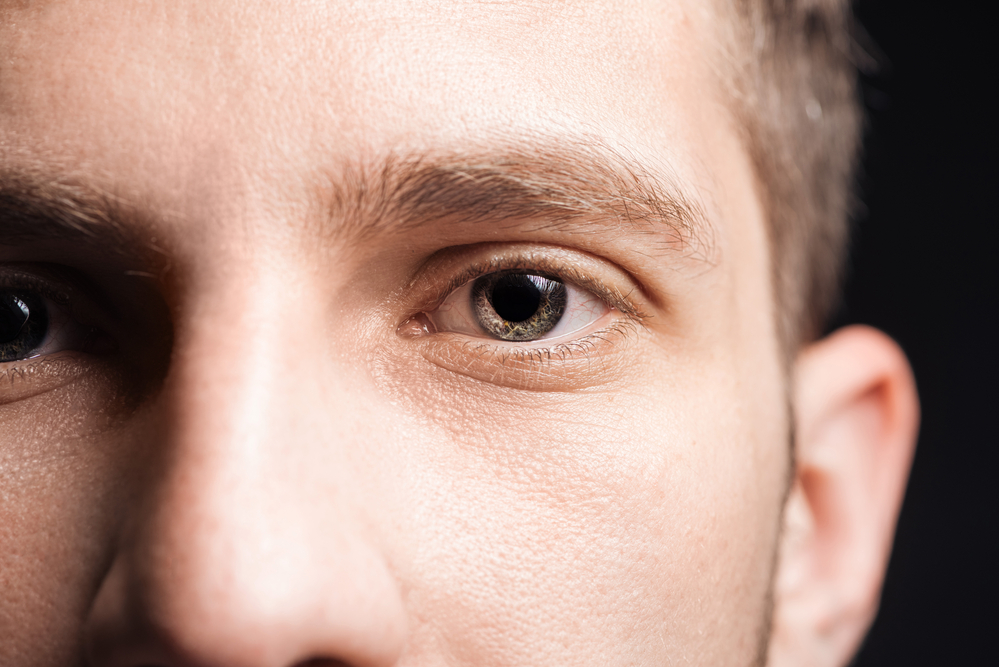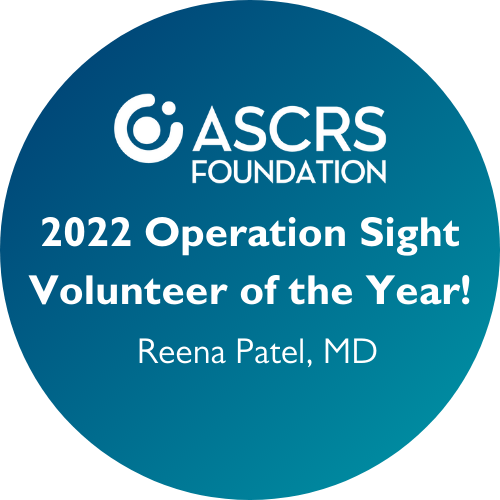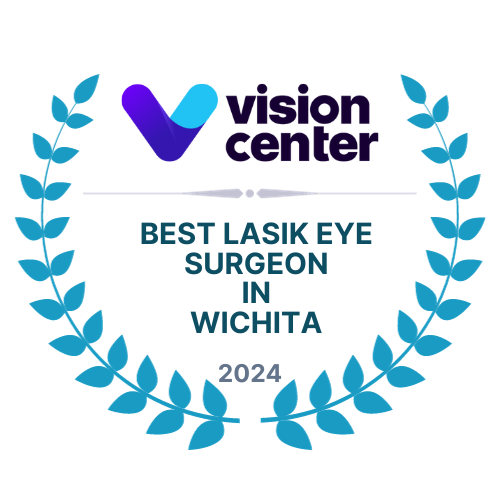LASIK, less commonly referred to as laser-assisted in situ keratomileusis, is a procedure designed to correct vision problems by reshaping the cornea. Dr. Patel proudly offers this procedure at Wichita Vision Institute in Wichita, KS because she understands how important clear vision is to independence and quality of life. Keep reading to learn more about this procedure, including what the recovery process is usually like.
How Long Is Recovery After LASIK?
Generally, you can expect your vision to be blurry for roughly six to 24 hours following this procedure. However, it may take two to three months before your LASIK recovery is complete.
Why Is This Procedure Performed?
LASIK can quickly, safely, and effectively correct a number of vision concerns, including nearsightedness (myopia), farsightedness (hyperopia), and astigmatism. Nearsightedness can occur when your cornea is curved too sharply or your eyeball is too long. This causes distant vision to blur because light rays focus in front of the retina.
Farsightedness is a condition that occurs when your cornea isn’t curved enough or your eyeball is too short. If you suffer from farsightedness, near vision is blurry, and distant vision may be blurry, too. If you suffer from astigmatism, it is because your cornea is unevenly flattened or curved. This condition disrupts the focus of both distant and near vision.
How Should I Prepare for My Procedure?
Before your scheduled procedure, you should arrange for someone to drive you home. You will not be able to drive home after surgery due to the effects of the medication you will receive prior to your procedure. Additionally, you should refrain from using any cosmetics, like eye makeup, lotions, cream, or perfumes the day before your procedure or the day of your procedure.
Furthermore, you may need to go a few weeks without wearing contact lenses prior to your procedure. This is because contact lenses can alter the shape of your cornea. Precisely how long you need to go without wearing your contact lenses depends on how long you have been wearing them and whether you wear soft or hard lenses.
What Can I Expect Before My Procedure?
Dr. Patel will give you a comprehensive rundown on what to expect before, during, and after surgery during your initial evaluation. Additionally, during your initial evaluation, you can expect her to talk to you about both your medical and surgical history. You will also undergo a comprehensive eye exam to verify that this procedure will be safe for you. The eye examination is also crucial for assessing your vision.
Some of the things Dr. Patel will look for include signs of an eye infection, inflammation, dry eyes, large pupils, and high eye pressure. She will also measure your cornea, noting its contour, thickness, and any irregularities in its shape. This lets her know how much tissue needs to be removed and what reshaping needs to be done. Furthermore, she will give you the opportunity to express any concerns or ask any questions you may have about the process.
What Can I Expect During My Procedure?
Generally, you can expect your procedure to take no longer than half of an hour to complete. First, you will be asked to lie on your back in a reclining chair. Then, Dr. Patel will numb your eye with special eye drops. You will not receive general or local anesthesia, and you won’t be sedated. Once you’re prepared for surgery, your eyelids will be held open with a special instrument. After that, a small hinged flap will be cut away from the front of your eye.
Dr. Patel uses a femtosecond laser to create this flap. There is no blade required! The flap will then be folded backward, giving Dr. Patel access to the portion of the cornea that needs reshaping. Then, a programmed laser will be used to reshape the misshapen parts of your cornea by removing tiny amounts of corneal tissue through the pulses of the laser beam. Finally, the flap will be laid back into place.
What If Both of My Eyes Need Laser-Assisted In Situ Keratomileusis?
If both of your corneas need to be reshaped, you can generally expect both procedures to be performed on the same day. During your initial evaluation, Dr. Patel will advise you on how long you can expect your procedure to take once she has determined the scope of the alterations necessary to improve your vision.
What Can I Expect After My Procedure?
Remember, there is a possibility that your vision will be blurry after surgery. Therefore, you will need someone to drive you home. You should not go back to work after your procedure. However, you may be able to go back to work the day after your procedure. It is advisable to let your supervisor know that you may need one or two days off after surgery to recover. You should not try to return to work if you are feeling fatigued or sensitive to light.
Can I Wear Eye Makeup After My Procedure?
You will not be able to apply cosmetics to your eye area for one to three weeks post-op depending on how quickly your recovery progresses. It is very important to give your eyes ample time to heal, and avoiding the use of eye makeup reduces the likelihood of a bacterial eye infection.
Can I Rub My Eyes After Surgery?
It is never a great idea to rub your eyes, regardless of laser eye surgery. However, it is imperative that you refrain from rubbing your eyes during the first two weeks post-op. After that, you may rub your eyes very gently if you feel that you absolutely must.
What Else Should I Avoid After My Procedure?
You also will need to avoid swimming, using a hot tub, or participating in strenuous contact sports for several weeks following your procedure.
Will I Need To Wear Glasses After My Procedure?
LASIK is highly effective. In fact, fewer than 20% of people who undergo this procedure find that they need to wear corrective lenses after surgery. Therefore, you can feel fairly confident that you will no longer need glasses or contact lenses after your procedure. Typically, the people who still need to wear corrective lenses after surgery suffer from a combination of astigmatism and severe nearsightedness or farsightedness.
How Long Can I Expect the Results of My Procedure to Last?
You can generally expect the results of your procedure to last a lifetime. However, several factors can affect the longevity of your results. Only 88 to 90% of people who undergo LASIK can enjoy their results for the rest of their life. The remaining 10 to 12% experience corneal shape changes due to pregnancy, eye injuries, extreme hormonal imbalances, and other factors.
Am I a Good Candidate for This Procedure?
If you are at least 18 years old and experiencing vision problems due to a misshapen cornea, there’s a good chance that you’ll qualify for this procedure. However, it is not appropriate for every adult. This procedure is generally not recommended for people with a family history of eye diseases that cause corneal thinning and bulging. Additionally, it may not be an ideal procedure for you if you have very thin corneas or large pupils.
Note that the reason candidates must be at least 18 years of age is that hormonal changes that occur during puberty can affect your vision significantly. If you get surgery before your vision is stable, you may not enjoy long-lasting ideal results. It is generally advisable that LASIK candidates have a stable prescription for corrective lenses for at least a year or two before they undergo this procedure.
What If I Have an Eye Condition That’s a Contraindication for This Procedure?
If you are suffering from other eye problems in addition to a misshapen cornea, they need to be treated before you undergo LASIK. Some of the most common contraindications include glaucoma, cataracts, and dry eye.
Schedule Your Initial Consultation Today
LASIK recovery may take two to three months to complete. However, you should only expect your vision to be blurry after surgery for roughly six to 24 hours. If you have vision problems caused by a misshapen cornea, this procedure may be right for you. Contact us today at Wichita Vision Institute in Wichita, KS to schedule an initial evaluation with Dr. Patel and find out if you are a suitable candidate for this procedure.







